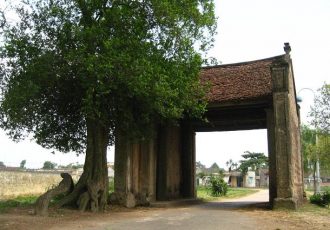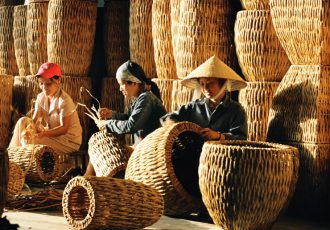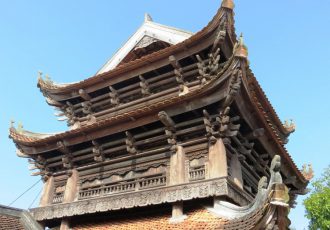A glimpse of the traditional Vietnamese house
Located in a region of rivers and streams, the architecture of the house of Vietnam is strongly linked to this wetland, people who depend on rivers to live (fishermen, smugglers, etc …) usually live in their boats: These are the houseboats, house rafts that, bringing together several families, and form floating villages, fishing villages, fishing hamlets. Hundreds of ethnic minority tribes live in houses on stilts to escape perpetual flooding, for the English diplomat Finlayson, in Saigon at the beginning of the twentieth century, there are “many houses high on legs, with wooden floors, tidy along canals, rivers or even along major roads, spacious and airy. The Vietnamese house on stilts is precisely the most common model of habitation in Vietnam. It is still widespread in the countryside and in the high mountainous regions. It makes it possible both to constantly face a difficult environment, to fight against torrential and sudden rains of the mountains and against the periodic floods of the low areas, response to a very humid climate, to limit attacks of insects and wild animals (parasites, reptiles, tigers, etc.)
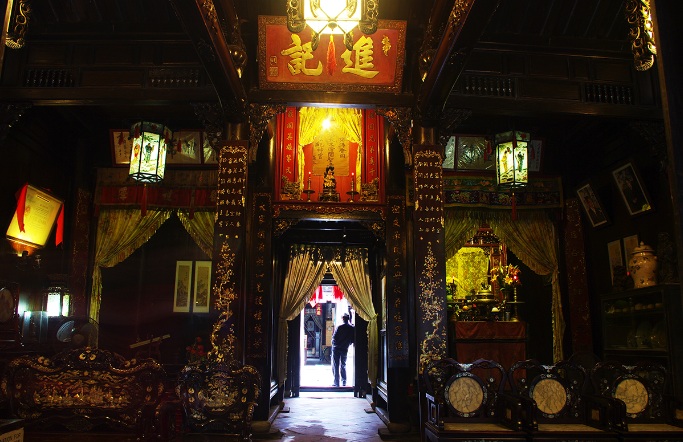
The principles of the Vietnamese house
Life is so connected to this world of rivers and streams that even the roof of the Vietnam house is curved to imitate a boat.
The formula Nha cao cua rong (high house, wide opening) sums up the standard of the Vietnamese house.
The term “high” of the house of Vietnam has two connotations: First, the place through which man enters the interior must be high, well above ground level to cope with rising water, floods, humidity, and insects. Then ” high” returns to the height of the ceiling which must create a spacious, airy and cool volume to fight against the heat. This produces a steeper slope that allows a faster flow of sometimes torrential waters and avoids too-rapid deterioration of materials. This requirement has been followed very closely at all times, from the houses of the Dong Son era to the “earth houses”. The images of Dong Son houses show us that roofs are always very high compared to the floor.
.
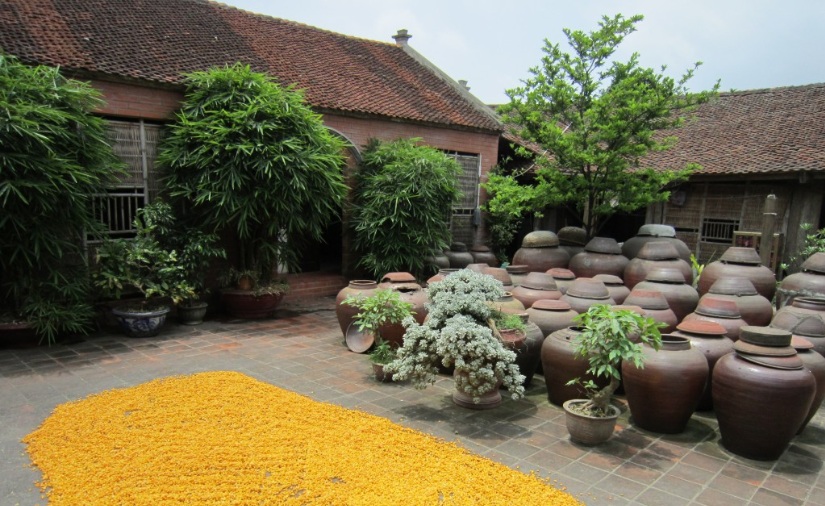
Why, for tall houses, make openings not high, but wide? A small height of the doors and windows avoids the oblique rays of the sun and gusts of rain. Against the sun’s rays, bamboo basketry panels are also available to shield direct radiation from the sun and indirect radiation from the yard. Also to avoid solar rays, a shaded belt has been created around the foot of the wall, and the lower edge of the roof is often extended called giot gianh (drop of thatch) far outside the veranda. Some houses on stilts in the mountains have their giot gianh almost at floor height.

The openings must be wide to allow maximum air circulation and therefore freshness. On a gable, an empty triangular space (popularly called khu di = ass of a whore) is often left to let out the heat and fumes of the kitchen. This small opening forms with all the lower doors and windows an adequate ventilation system. But at the same time, it is necessary to avoid bad winds, too strong (drafts). This is why, from experience, we avoid aligning the gate and front door. The main door should be in the middle and the gate off-centre while one should never access the house through a straight and direct line. At the foot of the Vietnamese house, it is necessary to plant a hedge of shrubs or mount a low wall that prevents the wind from blowing straight, deflecting it to the sides. It is believed that the wind that rushes directly into the house is a carrier of diseases, sterility and death.

